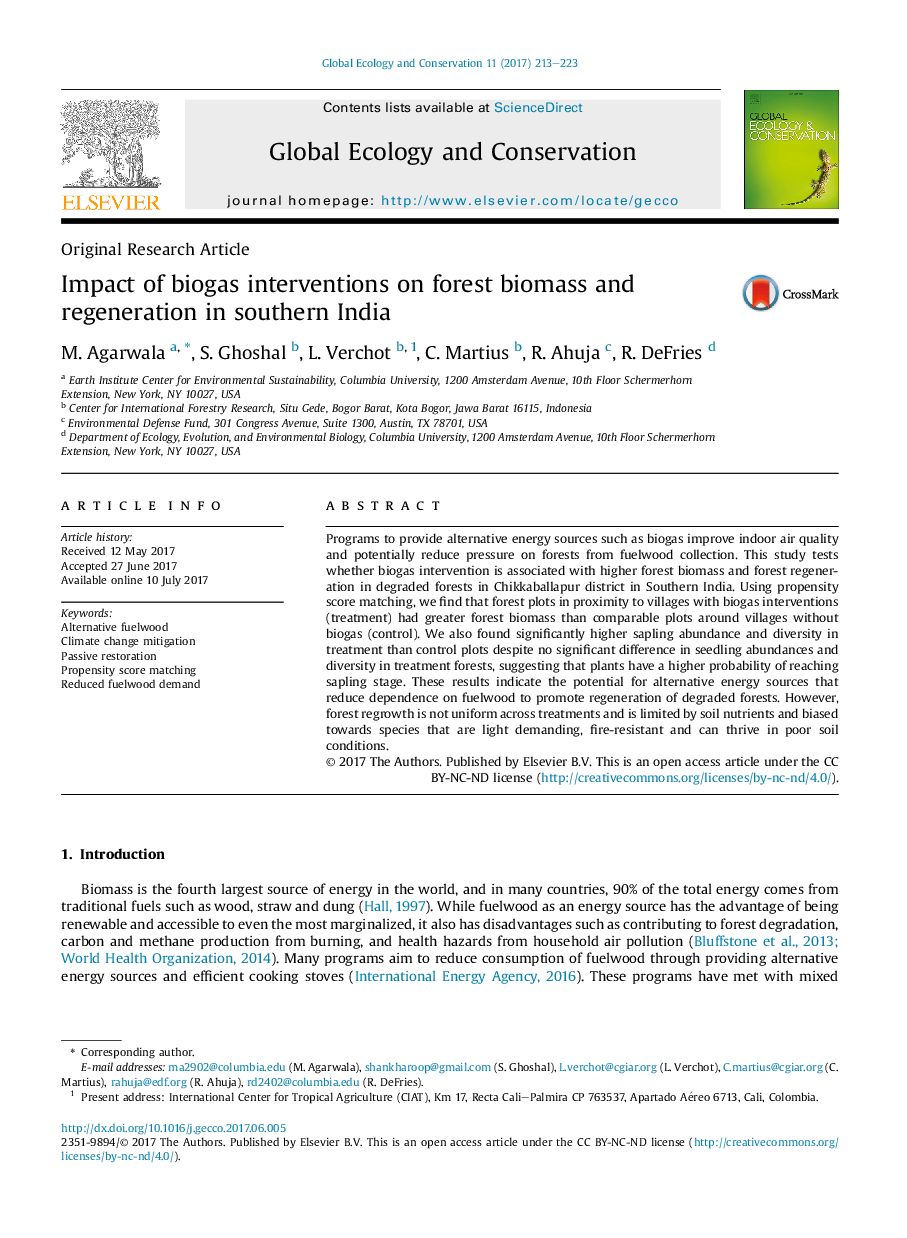| Article ID | Journal | Published Year | Pages | File Type |
|---|---|---|---|---|
| 5742414 | Global Ecology and Conservation | 2017 | 11 Pages |
â¢Biogas interventions are associated with higher forest biomass.â¢Biogas interventions also associated with higher sapling abundance and diversity.â¢Potential for alternative energy sources to promote regeneration of degraded forests.â¢But forest regrowth influenced by soil nutrients.â¢Species that are light demanding, fire-resistant and can thrive in poor soil conditions favored.
Programs to provide alternative energy sources such as biogas improve indoor air quality and potentially reduce pressure on forests from fuelwood collection. This study tests whether biogas intervention is associated with higher forest biomass and forest regeneration in degraded forests in Chikkaballapur district in Southern India. Using propensity score matching, we find that forest plots in proximity to villages with biogas interventions (treatment) had greater forest biomass than comparable plots around villages without biogas (control). We also found significantly higher sapling abundance and diversity in treatment than control plots despite no significant difference in seedling abundances and diversity in treatment forests, suggesting that plants have a higher probability of reaching sapling stage. These results indicate the potential for alternative energy sources that reduce dependence on fuelwood to promote regeneration of degraded forests. However, forest regrowth is not uniform across treatments and is limited by soil nutrients and biased towards species that are light demanding, fire-resistant and can thrive in poor soil conditions.
